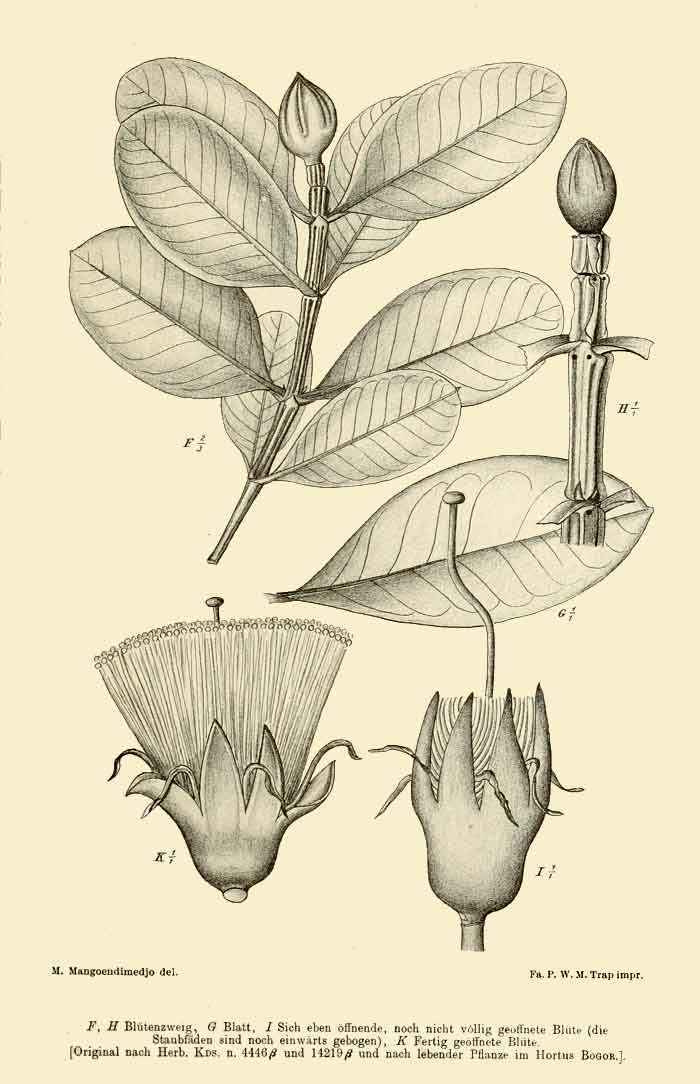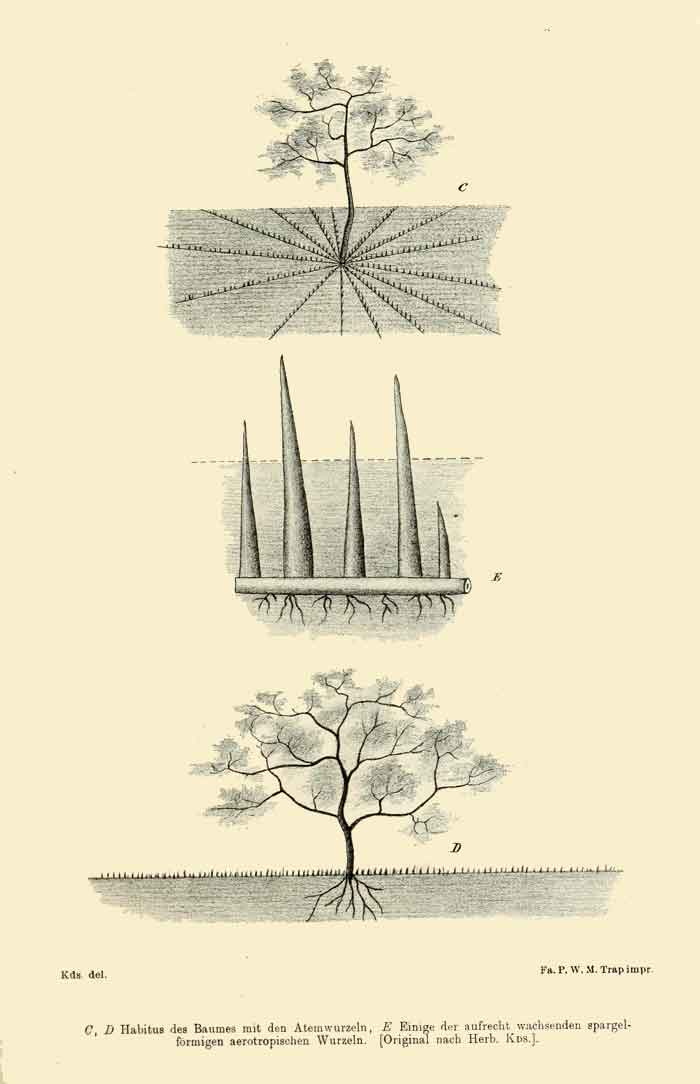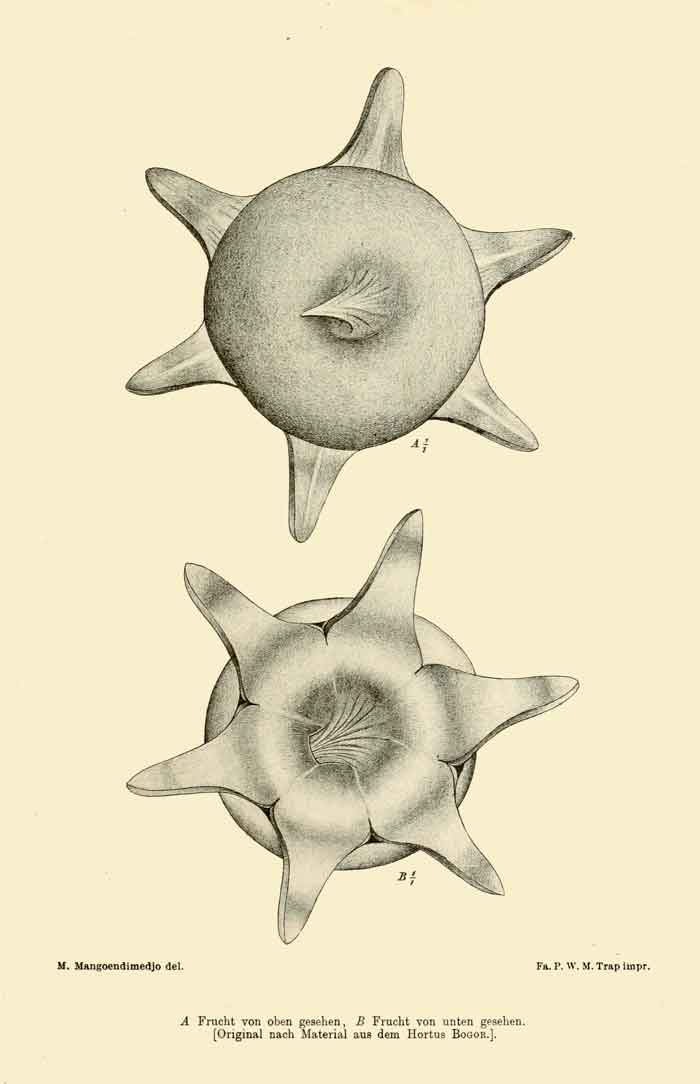
Classification System: APG IV
Superregnum: Eukaryota
Regnum: Plantae
Cladus: Angiosperms
Cladus: Eudicots
Cladus: Core eudicots
Cladus: Rosids
Cladus: Eurosids II
Ordo: Myrtales
Familia: Lythraceae
Genus: Sonneratia
Species: Sonneratia caseolaris
Name
Sonneratia caseolaris (L.) Engl.
References
USDA, ARS, Germplasm Resources Information Network. Sonneratia caseolaris in the Germplasm Resources Information Network (GRIN), U.S. Department of Agriculture Agricultural Research Service. Accessed: 28-Oct-07.
Vernacular names
বাংলা: চাক কেওড়া
English: Cork tree, Mangrove apple
ไทย: ลำพู
Tiếng Việt: Bần chua

Sonneratia caseolaris, commonly known as mangrove apple,[3] is a species of plant in the family Lythraceae. The fruit is noted for its outward similarity to the persimmon fruit.[4]
Sonneratia caseolaris in Kerala
This tree is a type of mangrove growing up to 20 m in height and with a trunk reaching a maximum diameter of 50 cm. It is present in tropical tidal mud flats from Africa to Indonesia, southwards down to northeast Australia and New Caledonia and northwards up to Hainan Island in China and the Philippines.
The fruit of this tree is the subject of a legend of Maldivian folklore, Kulhlhavah Falhu Rani. Kuhlhavah (ކުއްޅަވައް) is the Dhivehi name for the mangrove apple (Sonneratia caseolaris). [5]
The tree is associated with congregating fireflies throughout southeast Asia[6] and is the food source of moth and other insects.

Uses
The leaves and the fruit are edible and appreciated as food in certain areas, such as Maldives.[3] In Sri Lanka, where the fruit is known as kirala gédi (කිරල ගෙඩි) in Sinhala, the pulp of the fruit is mixed with coconut milk extract and made into a milk shake.[7] Many tourist resorts situated in the South of Sri Lanka where the trees grow abundantly alongside rivers, offer fresh fruit drinks made from the fruit. In the Maldives the fruits are used as a refreshing drink and also eaten with scraped coconut & sugar.
The tree is also sometimes known as cork tree, because fishermen in some areas make fishing net floats by shaping the pneumatophores into small floats.[6]
References
Kathiresan, K.; Salmo III, S.G.; Fernando, E.S.; Peras, J.R.; Sukardjo, S.; Miyagi, T.; Ellison, J.; Koedam, N.E.; Wang, Y.; Primavera, J.; Jin Eong, O.; Wan-Hong Yong, J.; Ngoc Nam, V. (2010). "Sonneratia caseolaris". IUCN Red List of Threatened Species. 2010: e.T178796A7608551. doi:10.2305/IUCN.UK.2010-2.RLTS.T178796A7608551.en. Retrieved 19 November 2021.
"Sonneratia caseolaris (L.) Engl". Plants of the World Online. Board of Trustees of the Royal Botanic Gardens, Kew. 2017. Retrieved 7 September 2020.
Mangrove Apple Archived 2006-12-09 at the Wayback Machine
"mangrove flora: berembang (sonneratia caseolaris)". mangrove.nus.edu.sg.
Romero-Frias, Xavier (2012) Folk tales of the Maldives, NIAS Press, ISBN 978-87-7694-104-8, ISBN 978-87-7694-105-5
"Berembang (Sonneratia caseolaris) on the Shores of Singapore". www.wildsingapore.com.
Apé Lamā Lōkaya:1950, Chapter 28 (Vijitha Yapa Publications) ISBN 978-955-665-250-5
Retrieved from "http://en.wikipedia.org/"
All text is available under the terms of the GNU Free Documentation License

